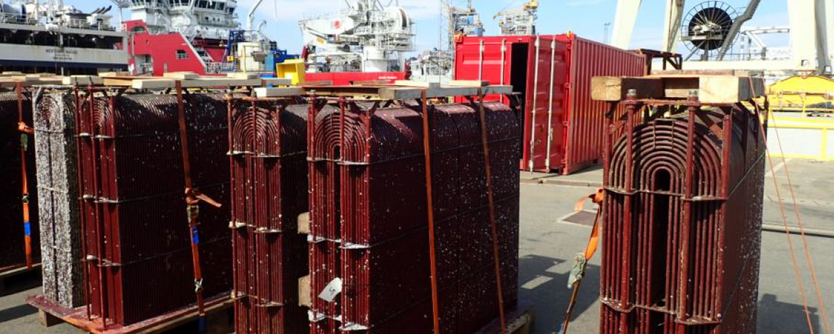
Proper maintenance for Box Coolers
As part of its commitment to improving best practice through knowledge sharing, Norwegian Hull Club's latest Casualty Information Newsletter highlights common challenges and recommended actions related to Box Cooler systems.
Norwegian Hull Club has seen increasing numbers of incidents related to inadequately maintained Box Coolers (BCs).
The Club sees the potential for a catastrophic event - depending on the position of the damaged BC in question, the worst-case scenario is a flooded engine room resulting in a lost vessel.
Background
A BC is a water-based cooling system, fitted in the sea chest on the side of the hull, which became popular on certain types of vessels from 2005 onwards.
Norwegian Hull Club has seen corrosion damage arising from BCs when the units have most likely not been cleaned and/or painted properly following a vessel’s first Special Survey (SPS). The BC compartment itself consists of various materials, including aluminium-brass or copper-nickel in the box cooler tubes, aluminium or zinc anodes, stainless steel used in the BC frame, copper rods in the Impressed Cathodic Anti-Fouling (ICAF) system and the steel of the ship’s hull. If these materials are not isolated from each other, this can cause galvanic corrosion.
Complex damage scenario
Levels of galvanic corrosion depend on several factors such as the degree of damage suffered by the coating on the BC’s tubes (aluminiumbrass tubes are coated), the amount and quality of sacrificial anodes, paint type with its thickness and quality and the salt content and temperature of the water. ICAF systems should be closely monitored as they can be prone to loose wires and failing copper anodes. Copper rods MUST be isolated to prevent corrosion to the hull. Box Cooler maintenance For proper cleaning and repainting, a BC will most likely need removing from the vessel’s hull. It will then require being worked on by either the manufacturer or a recognised, qualified specialist. This is because the process requires particular care and competence. BCs cannot be cleaned as part of standard hull-cleaning procedures, as high-pressure water blasting cannot be used and only ‘soft’ tools and certain approved chemicals are suitable for removing barnacles and other types of sea growth.
Also, painting of a BC cannot be undertaken as part of hull painting – a different type of paint is needed, plus the access for proper painting of the tubes is extremely limited.
As part of Norwegian Hull Club’s commitment to improving best practice through knowledge sharing, we recommend:
1. Maintaining BCs according to the manufacturer’s instructions, in all aspects (maintenance, painting, sacrificial anodes, ICAF system);
2. Ensuring that specific Scope of Work for maintenance of BCs is stipulated in the drydocking specification submitted to shipyards;
3. Ensuring qualified supervision of all BC work carried out during dry-docking; 4. Sharing your understanding and experience of the complexity of BCs with your colleagues.